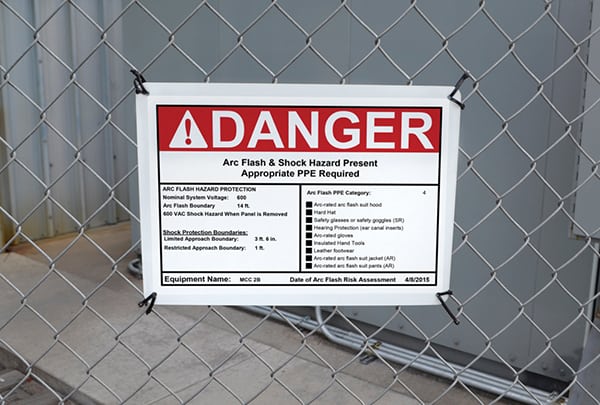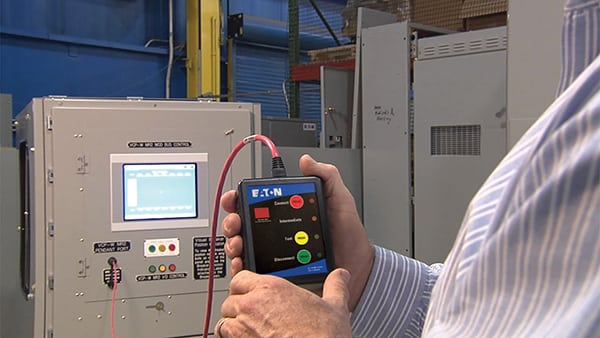Electrical Arc Flash Protection Solutions
I’ve got some good news and some bad news. The good news is that, according to the U.S. Bureau of Labor Statistics, the number of occupational fatalities resulting from exposure to electricity has decreased steadily during the past 10 years (Figure 1). The bad news is that 141 people died on the job in the U.S. as a result of exposure to electricity in 2013 (the most recent year for which revised data are available). Many more were severely injured, and some will never again enjoy their previous quality of life.
Although not all injuries or deaths caused by exposure to electricity are the result of arc flash incidents, arc flash hazards present a serious risk to workers. The Workplace Safety Awareness Council defines arc flash as “a phenomenon where a flashover of electric current leaves its intended path and travels through the air from one conductor to another, or to ground. The results are often violent and when a human is in close proximity to the arc flash, serious injury and even death can occur.”
The consequences of an arc flash incident can obviously be quite severe. Beyond the risk to personnel, a business can sustain costly equipment damage, interrupted production, legal liability, increased insurance rates, and fines. In other words, it is in every facility’s best interest to take precautions to reduce the risk of arc flash incidents.
Understanding the Hazard
According to Pat Hickey, director of marketing for Eaton’s Power Distribution and Control Assemblies Division, conducting a comprehensive study of a plant’s electrical system is a required first step.
“This is a case of what you don’t know can be a problem,” Hickey told POWER. “Conducting an electrical system walk-through, such as an arc flash study, helps gather the facts about your system, which helps you make more informed decisions about how to protect personnel. Whether it’s a new product innovation or a change in the maintenance process, if you know the facts, then you can make better decisions.”
Scott Brady, Eaton’s western region manager for the technical application support team in its Electrical Engineering Services and Systems Division, suggested that the data collection process is an important part of the arc flash study.
“You have to make sure that the data is real,” Brady said. “Sometimes drawings are not totally accurate. Our preference is to collect data in the field.”
Maintenance must also be taken into account. Brady noted that Eaton reviews documentation to determine if the manufacturer’s recommended maintenance has been completed as prescribed.
“Just putting equipment specifications into a software system may be insufficient and provide erroneous results if the over-current protection devices are not working properly. Equipment maintenance practices need to be considered,” Brady said.
Typically, a maintenance service sticker is affixed to electrical equipment, indicating the date of service and the retest date. The practice assists electrical workers in determining the equipment’s maintenance condition. Eaton’s workers also perform visual inspections of the equipment to verify its general condition. On older equipment, additional research may be necessary to really understand its capabilities.
The study must also look at all of the different configurations under which a generating plant might operate. If you don’t consider all of the scenarios, you might not capture the greatest arc flash possibility.
For example, if a plant has redundant source electrical systems with bus ties between the sources (main-tie-main) and it normally operates with one of the mains open, but under certain circumstances it operates with both mains closed, the fault current could change, resulting in a change to the incident-energy level.
However, higher fault current doesn’t necessarily equate to greater danger. Higher fault current tends to trip over-current protection devices faster, which could result in less incident energy, so each situation should be evaluated independently.
“Once you conduct an arc flash study, the ability to label the equipment is a big benefit; that information allows maintenance personnel working with equipment to understand whether or not they are properly protected,” Hickey said (Figure 2).
 |
| 2. Hazard labeling. Once the arc flash study is complete, you must label areas and equipment so workers can reference the information to select appropriate protective gear. Courtesy: Graphic Products |
DuraSuite label creation software is one tool that can be used for the job. The latest version, released by Oregon-based Graphic Products, allows users to create custom templates using imported graphics, or generate standard labels using a built-in library of more than 1,800 safety symbols. In addition to National Fire Protection Association 70E-compliant arc flash labels, the solution can also be used to create chemical, pipe, and equipment tags.
Remote Racking Systems
Electrical equipment suppliers are constantly developing innovative new solutions utilizing the latest in technology, so it is likely that there are upgrade or retrofit opportunities available for most facilities to reduce arc flash risks. Hickey suggested that remote racking systems are one option worth considering, if you don’t already have equipment equipped with these systems.
“Racking” is the term used for connecting or disconnecting a breaker from a bus by inserting or removing it from the switchgear cubicle. It’s usually done to accommodate maintenance. Traditional racking methods for circuit breakers often require the use of a wrench or special tool to manually rack a breaker in or out. The task is a high-risk activity, and it’s especially dangerous when done manually, because personnel must be in close proximity to the equipment to perform the work.
Hickey said that Eaton offers motorized remote racking systems (Figure 3) designed to allow workers to perform the job while up to 30 feet away from the arc flash zone. Increasing the distance between an operator and live components helps reduce the effects of arc flash exposure. The option is available on new low- and medium-voltage (LV and MV) equipment, but it can also be added to some previously installed breakers, depending on the type and manufacturer.
 |
| 3. The pendant option. The motorized remote racking system allows workers to distance themselves from the racking activity. Courtesy: Eaton |
Remote racking control capabilities can be interfaced with an external hand-held pendant, human-machine interface, or ModBus communications. The system’s motor is installed inside the switchgear to prevent the need for lifting and aligning an external motor to the outside of the switchgear. The system is also designed to allow manual racking of circuit breakers and auxiliary drawers, if needed.
Brady noted that a similar solution is available for motor control centers (MCCs). Ordinarily, MCCs have a plug-in bucket for adding the starter. Eaton’s FlashGuard MCCs offer a remote-operated racking device option that can advance and retract the bus stabs, much like a draw out circuit breaker. It can be retrofitted to some older MCCs too.
“Studies indicate that many arc flash accidents have occurred when personnel are working on MCCs, which isn’t surprising because the doors are typically open when someone’s troubleshooting an MCC,” said Brady.
The FlashGuard MCC is designed to get the operator out of the area and helps maintain a closed-door unit.
Breaker and Switch Upgrades
Some older facilities may have been constructed with oil-dashpot circuit breakers, which can pose a problem; if maintenance is overlooked, the oil can leak out. “If those dashpots don’t have the oil in them, they’re not going to work,” said Brady.
However, retrofit kits are available for many of the old-style breakers. The kits are relatively inexpensive, use a modern electronic microprocessor, and come with Eaton’s Arcflash Reduction Maintenance system, which provides the added benefit of reducing the arc flash risk for maintenance activities performed downstream of the retrofitted breakers.
Another frequent problem is found in primary unit substations. Brady said many are designed with an MV switch, such as a 13.8 kV or 4,160 V switch, feeding a substation transformer. On the secondary side of the transformer there may or may not be a main breaker (he said that it’s about a 50-50 chance). Brady finds that the line side of the switchgear—on the LV side—typically has a very high arc flash rating, because it’s basically relying on the fuses in the MV switch to operate in order to protect the LV side.
Brady said a solution is available using a retrofit of the existing fuse switch or a new product, which incorporates a vacuum circuit breaker on the primary side of the transformer. Either of the solutions results in faster operation than the original design, with tighter coordination, thus reducing the arc flash hazard on the secondary side.
Infrared scanning windows offer a pretty good bang for your buck too. (See “Doing More with Less: New Solutions Help Address Power Plant O&M Staffing Difficulties” in the April 2015 issue or at powermag.com.) The windows, offered by FLIR Systems, IRISS, Fluke, and others, not only reduce the risk of an arc flash incident for workers, but they can also reduce the cost of performing the infrared scan because they eliminate the need to remove panels to gain access for the scan. In addition, periodic infrared scans can help facilities avoid potential arc faults by identifying equipment in need of maintenance, which allows work to be done to eliminate the problem.
“There isn’t one system solution that fits every application requirement. Each facility has different risk factors and different opportunities. You do want to customize your solution for what your facility needs to help keep personnel safe,” Hickey said.
For more on minimizing arc flash hazards, see “Making Sense of New Arc Flash Protection Rules” in this issue. ■
— Aaron Larson is a POWER associate editor.
